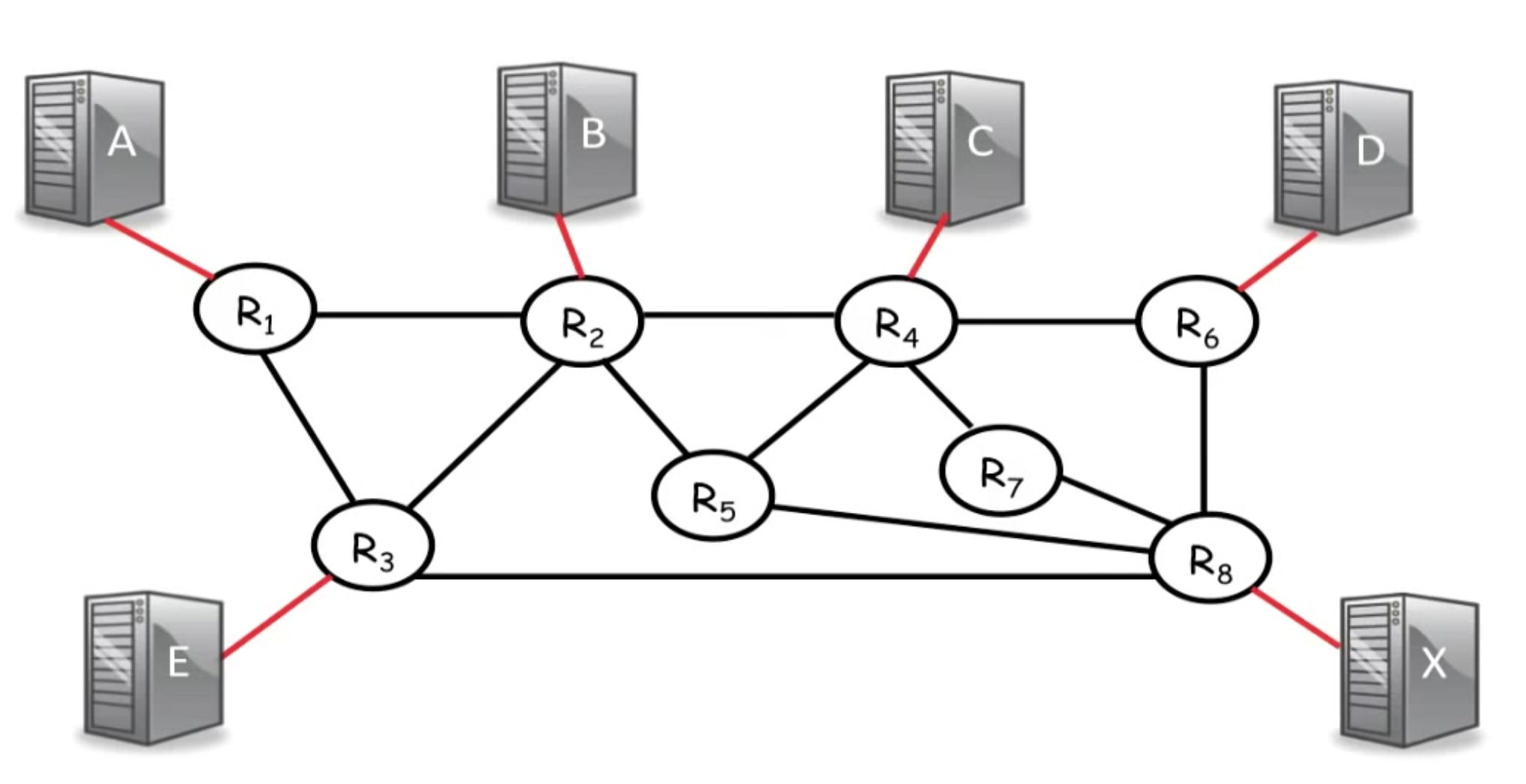Multicast
What is multicast
Imagine this scenario:
 An example of network topology for multicast
An example of network topology for multicast
Now A wants to send same packets to address group containing B, C, E, and X. It can simply send packets over and over again for 4 times, but it can improve the efficiency of sending the same packets by delegating the responsibility of replicating the packets to the network. And after that, A only sends one packets and the network replicates it and forwards it.
In other words, it moves the duty of replicating packets from the host A to the network.
Techniques and principles
Reverse Path Broadcast (RPB) aka Reverse Path Forwarding (RPF) and Pruning
In this mechanism, the protocol will form a shortest path spanning tree via the following ways:
- The sources (say A) sends out the packet.
- The router that receives the packet (say from interface x) will ask itself, if it was sending a unicast packet to A, is this (x) the interface through which it would send it?
- If the answer is yes, so therefore, it will send it out every other interface. Otherwise, it drops the packet.
So, it’s a little bit like flooding, but it’s asking more detailed question: is this the interface through which I would send it if it was a unicast packet going to A?
Plus Pruning
If some device receives a packet from a multicast group but isn’t interested it, it sends prune messages towards the source. So therefore the source won’t forward packet through corresponding interface again (for a sane period of time).
One versus multiple trees
It’s clear that the resulting tree is specifically for a single source, but not all. So we must build multiples trees for multiple sources.
Sometimes, we set a rendezvous as center to deliver packets.
So, there’s really a design choice in practice as to whether we maintain one tree or one for every source.